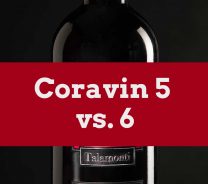Cooking Mouthwatering Meals with Moscato Like A Professional
Last Updated on August 1st, 2023
Reader Disclosure Disclosure: We may earn commissions for purchases made through links on our site. Learn more on our about us page.Cooking with Moscato? Why, yes! Sipping a chilled glass of Moscato always helps me cook. Though there is a general rule about cooking with a dry white wine, you can cook with Moscato beyond the recipes that call for it.
Let’s take a crash course in this wine so we can understand how to cook with it. Moscato, the ancient vine, or “vitis vinifera” in Latin, is an Italian word referencing the Muscat family of grapes, referring to slightly sparkling, sweet wines.
The small berry-like grape varietal produces highly sweet aromatic wines.
The low alcohol content relative to other wines means Moscato is sweet in its classification. If you enjoy low alcoholic, Italian fruity-floral wines, Moscato is what you seek. This ancient Greek varietal, tracing its roots back to Egypt, is one of the oldest wines in the world.
Moscato translates to musky flavor in Italian, associated with the sweet Muscat grape. The associated muscatel means distinct, sweet wine made from Muscat grapes. It is a grape with the fragrance of musk.
They make Moscato with the Muscat Blanc grape varietal. Though defined as “a sweet Italian dessert wine,” Moscato is fashionable for other occasions. Those that prefer sweeter versus dry white wines gravitate to Muscat.
Even drier wines on the spectrum have fruity and floral bouquets. They make Italian Moscato wines in sparkling, sweet, and crisp styles.
There are still Moscato wines if you’re not into bubbles or intend to use it for cooking. Because of its versatility, Moscato is great at balancing briny or spicy dishes. In addition, it’s a wine geared for dessert pairings and baked sweets.
Muscat grapes also produce raisins besides being made into fragrant wines. We eat the seedless confectionery grape fresh or dried, concentrating its sweetness in the raisin.
Considering this, Moscato would be a great addition to soups, curries, or sauces incorporating dried or cooked fruit. The wine is perfect for sweet sauces, reductions, rich seafood sauces, or poaching fruit.

What should I avoid cooking Moscato with?
Most Moscatos are sweet with flavor notes of lemon, mandarin, orange blossom, honeysuckle, and stone fruit, and medium to high acidity, making it ideal for cooking desserts.
Moscato pairs tastefully with contrasting flavors from spicy, sour, and salty to bitter or compliments sweet or fruity courses.
Sweet wine may be required in a few specific recipes but is not a fitting white wine substitute for most dishes. Instead, wine lovers recommend it with appetizers, light tangy meals, like Asian cuisine, and, of course, as an enhancement to desserts.
This semi-sweet frizzante is delectable with pies, chocolate, or nutty tortes and sweet enough to be its own pièce de résistance!
Steer clear of cooking any recipes that call for a dry white wine. Typically, you add a quality wine to add acidity to your dishes, not sweetness. This is because the sugars in the wine begin burning or caramelizing and affect the flavor of the food.
Avoid red meats, and the flavors of Moscato might overpower anything that isn’t high in spices.
Can I use Moscato for pasta sauce?
Now that we’ve discussed Moscato flavor profile and pairings, you can think about the sauces that might meld well with these wines. Tomato sauce is probably not a good idea. Try a white or lemony pasta sauce for a fish or chicken dish if you’re feeling adventurous.
Moscato may pair well with milk-based sauces like béchamel, incorporating cheese.
A Moscato could balance a spicy or chili pepper sauce as well. You can also try a sauce for vegetarian dishes as the flavors compliment vegetables like fennel, carrots, and bell peppers. Add the pasta, and voila!
In short, for cooking, consider incorporating Moscato for moderately sweet, flavorful sauces, reductions, or syrups.
Served chilled, Moscato with flavor notes of citrus, honeysuckle, and stone fruit pairs well with sweet salads, savory seafood, dessert, and fruit dishes, i.e., break out the cheeseboard.


















